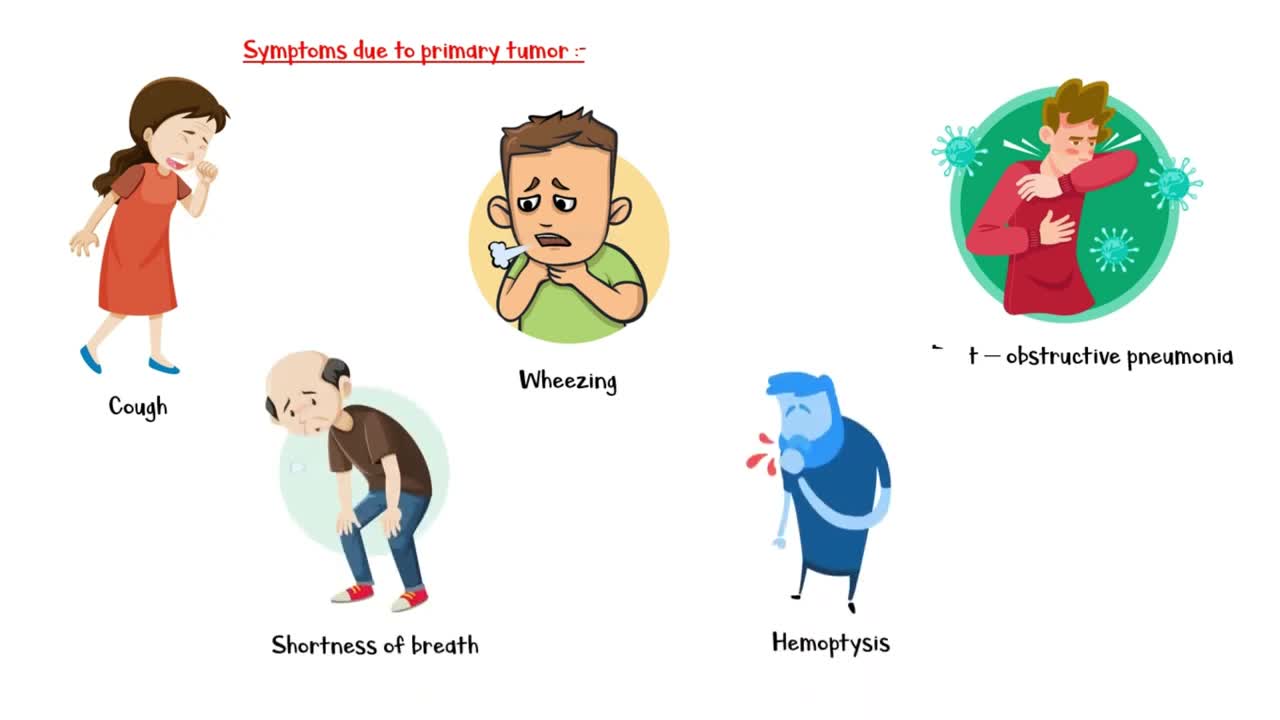Premium Only Content

Lung Cancer _- Signs & Symptoms _Patient Education
Lung cancer is the leading cause for cancer related deaths worldwide. And it usually peaks at about 50 to 69 years. However, approximately 2% of lung cancers occur before the age of 40. Unlike some other types of cancers, lung cancer has a very poor prognosis, since most of them are diagnosed at a late stage. Most patients who develop lung cancers are smokers, and have smoking related damage to the heart and lungs.
Other causes for lung cancer include, exposure to substances such as Radon, Asbestos, Halogen ether, Arsenic, Ionizing radiation, Chromium, Nickel, Vinyl chloride. Chronic interstitial pneumonitis. And environmental pollution.
Lung cancers can be broadly categorized in to primary, and secondary malignancies. Primary lung cancers are generally divided in to 2 main groups. Small cell lung cancer; And non small cell lung cancer, which accounts for about 85% of the total lung cancer cases. Histologically, non small cell lung cancers are further divided in to Adeno carcinoma; Squamous cell carcinoma; And Large cell carcinomas. Secondary lung cancers occur when a cancer had started elsewhere in the body, and spreads in to the lungs through blood or lymphatics. This is called metastasis of the initial tumor.
Lung cancers are often insidious, producing no symptoms until the disease is well advanced. But, about 7 to 10% of lung cancers are diagnosed early in asymptomatic patients when a chest radiograph performed for other reasons. At the initial diagnosis, about 20% of patients have only the localized disease. About 25% of patients have regional metastasis. And about 55% of patients have distant spread of the cancer, which makes the prognosis extremely poor.
Symptoms due to the primary tumor include, Cough, which is the commonest complaint of lung cancer patients. Wheezing, due to airway obstruction. Post obstructive pneumonia, caused by accumulation of secretions distal to the obstruction that is complicated by infection. Shortness of breath. Coughing up blood, also known as hemoptysis.
Pleural effusions. And chest pain.
Symptoms due to loco regional spread include,
Paralysis of the recurrent laryngeal nerve can cause hoarseness, or complete loss of voice; And Difficulty in breathing. Paralysis of the phrenic nerve can cause diaphragmatic paralysis, which can cause difficulty in breathing. And pressure on the sympathetic plexus can cause Horner’s syndrome, which is characterized by a triad of symptoms. Anhydrosis, or absence of sweating in the affected side, partial ptosis, or partially closed eye lid, and miosis, or constricted pupil.
#LungCancer #LungCancerSymptoms
-

Tundra Tactical
5 hours ago $0.07 earned🔫 California Ammo Win, Sig Sauer P320 Controversy, Meme Review & Would You Rather! 🎉🔥
20.6K1 -
 16:24
16:24
Forrest Galante
2 hours ago6 Deadliest Man Eaters to Ever Exist
9.68K3 -
 10:14
10:14
MattMorseTV
7 hours ago $0.34 earnedThe EU is in HOT WATER.
67.9K39 -
 LIVE
LIVE
The Rabble Wrangler
1 day agoPUBG with The Best in the West!
185 watching -
 3:57:19
3:57:19
EvilT4000
5 hours agoSaturday.....🟢For energy and focus click my Dubby link!
17.3K2 -
 LIVE
LIVE
SlingerGames
2 hours agoSpartan Night - Halo and More | Creator for @SELFMADEGGS
48 watching -
 3:57:49
3:57:49
Mally_Mouse
8 hours agoSpicy Saturday!! - 10k CELEBRATION! - Let's Play: Labyrinthine
28.9K1 -
 37:09
37:09
The Mel K Show
8 hours agoMel K & Dr. Kirk Moore | A Doctor’s Oath: Doing What is Right No Matter the Cost | 7-26-25
26.7K11 -
 LIVE
LIVE
Cewpins
3 hours agoCuphead while BLAZED🔥420💨710🍃!MJ
53 watching -
 11:09:40
11:09:40
MDGgamin
11 hours ago🔴LIVE - TARKOV & ARMA - Shots For Subs Saturday!!! - Chilling & Chatting - #RumbleTakeover
2.15K